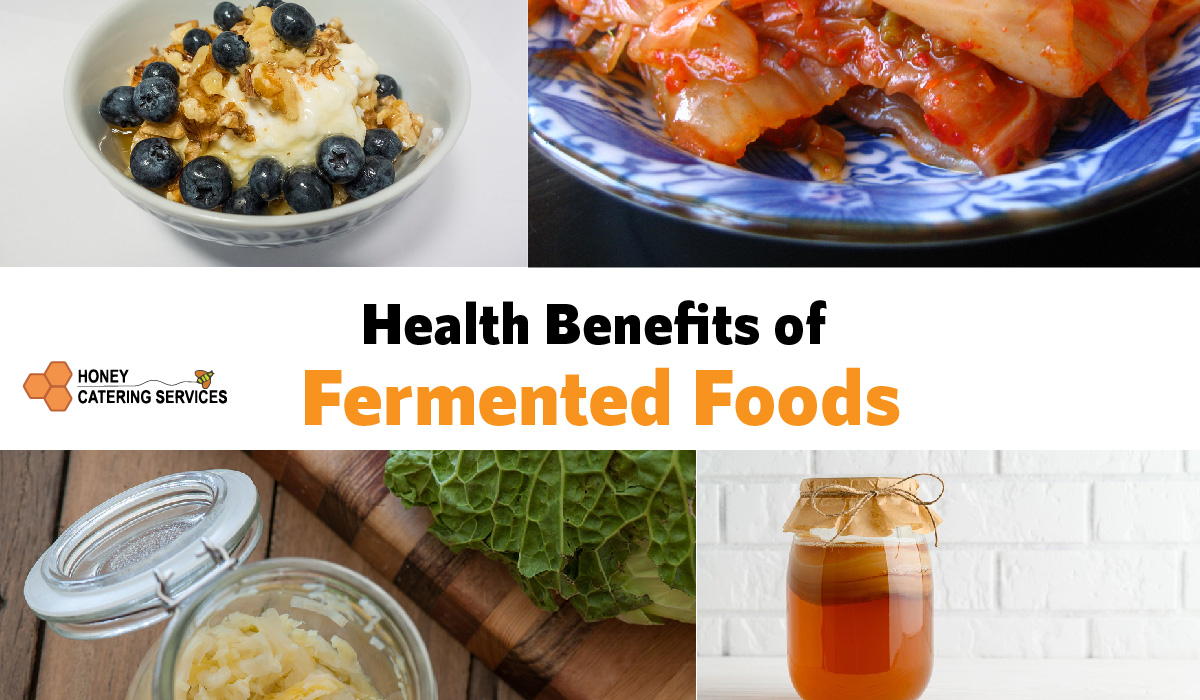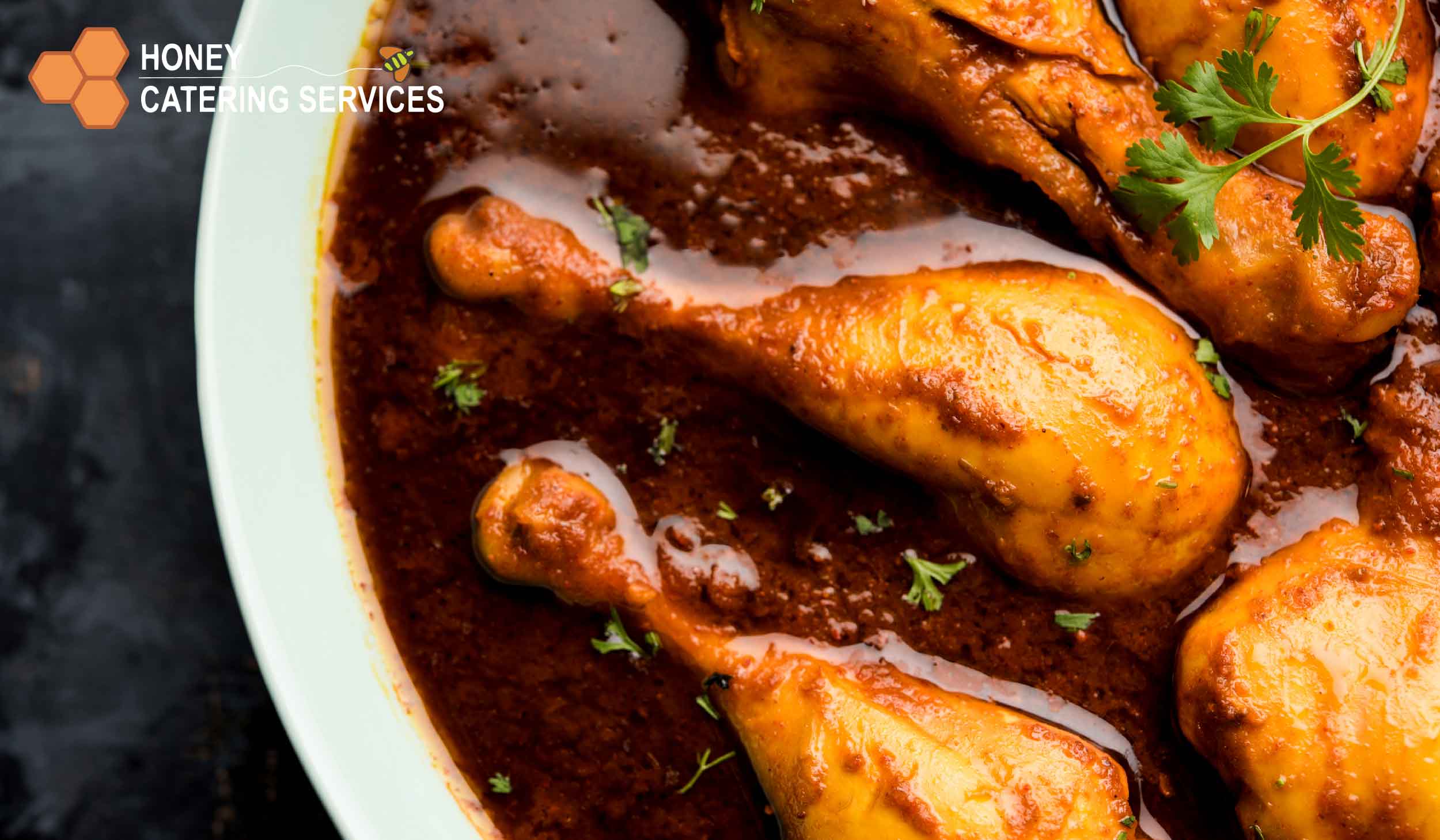In today’s world, maintaining a healthy weight is more than just a trend—it’s a necessity for overall well-being. People are constantly exploring various cuisines and diet plans, from Mediterranean to keto, in search of foods that help shed those extra pounds. However, what many overlook is that some of the best sugar-free, low-carb south indian foods are easyily available.
South Indian food is a treasure trove of health benefits, offering a unique combination of flavors, nutrients, and simplicity. The region’s traditional cooking methods and natural ingredients—like millets, lentils, vegetables, and spices—are not only delicious but also incredibly effective for weight loss. Packed with fiber, protein, and essential nutrients, these dishes keep you full, boost metabolism, and support digestion without compromising on taste.
If you’ve been venturing into other cuisines for healthy options, Honey catering services, brings you the best south indian cuisine foods for your weight loss journey, offering a wholesome and flavorful path to a healthier you. Come let’s dive into some of the most popular sugar-free, low-carb, and nutrient-packed South Indian foods that make weight management a delicious affair!
Healthy South Indian Foods for Weight Loss and Wellness
1.Sundal: A Protein-Packed Snack
Sundal is a popular South Indian dish made from boiled legumes like chickpeas, green gram, or black-eyed peas, seasoned with mustard seeds, curry leaves. It is a staple during festivals and also serves as a healthy, protein-rich snack. Sundal is high in fiber, low in fat, and helps keep you full, making it ideal for weight loss.
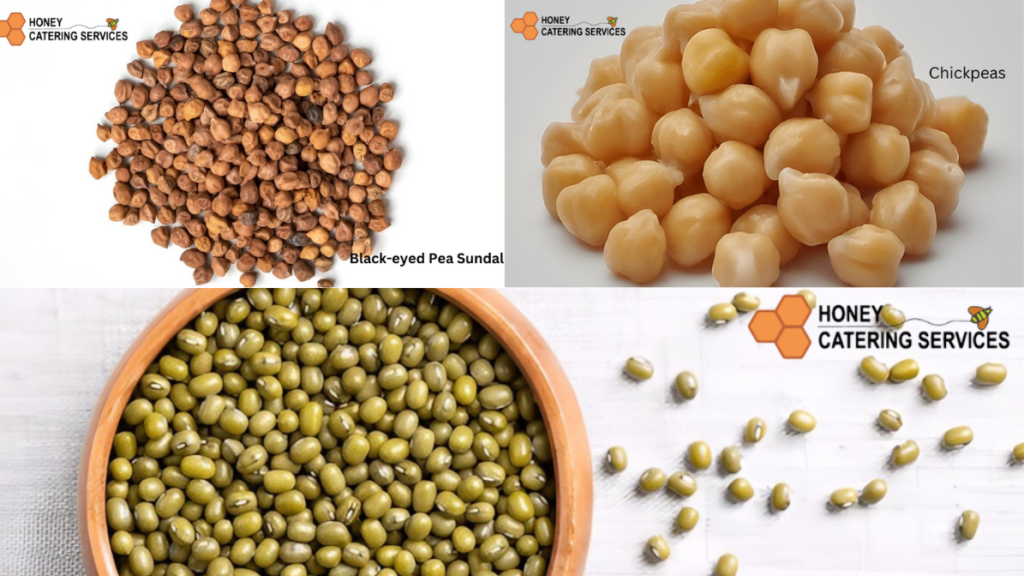
Calories:
- Chickpea Sundal: ~120-150 calories per cup
- Green Gram Sundal: ~110-130 calories per cup
- Black-eyed Pea Sundal: ~130-160 calories per cup
Health Benefits:
- High in plant-based protein to support muscle health
- Rich in dietary fiber for better digestion
- Low in fat and naturally sugar-free
2.Keerai Masiyal: A Nutrient-Dense Spinach Delight
Keerai Masiyal is a simple and nutritious dish made with mashed spinach or other leafy greens. Prepared with minimal oil and seasoned with mustard seeds, garlic, and green chilies, it’s a flavorful way to include greens in your diet. This dish is a powerhouse of iron, calcium, and antioxidants, promoting overall health while being low in calories.
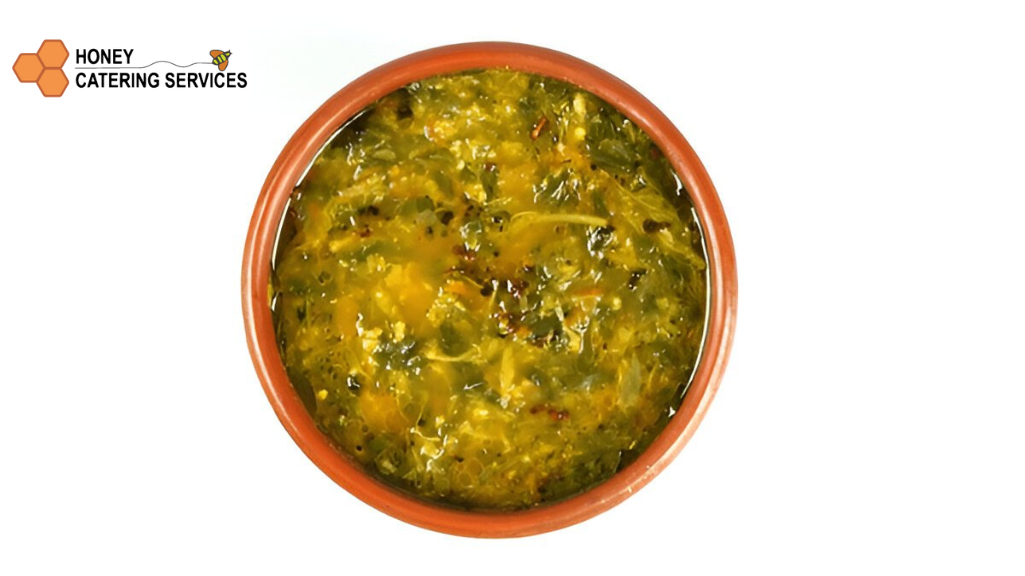
Calories:
- ~70-90 calories per serving (1 cup)
Health Benefits:
- Rich in iron, supporting red blood cell production
- High in fiber, aiding digestion and weight loss
- Packed with antioxidants to boost immunity
3.Dosa (Made with Ragi or Oats)
Traditional dosa is made from rice and urad dal, but you can opt for variations like ragi dosa (made with finger millet) or oats dosa for a lower-carb option. These versions provide the same crispy texture but with sugar-free, low-carb south indian foods making them ideal for a weight loss diet.

Carbs:
- 10-15g per dosa (depending on ingredients)
Calories:
- 80-120 per dosa
Health Benefits:
- Rich in fiber: Promotes better digestion and prevents overeating by keeping you full longer.
- Low glycemic index: Ragi and oats help in maintaining stable blood sugar levels.
- Nutrient-dense: Provides essential minerals like calcium (from ragi) and beta-glucan (from oats) to support bone health and immunity.
4.Idli (Made with Millet or Ragi)
Idli made from millets or ragi is a fantastic low-carb, sugar-free alternative to traditional rice-based idlis.
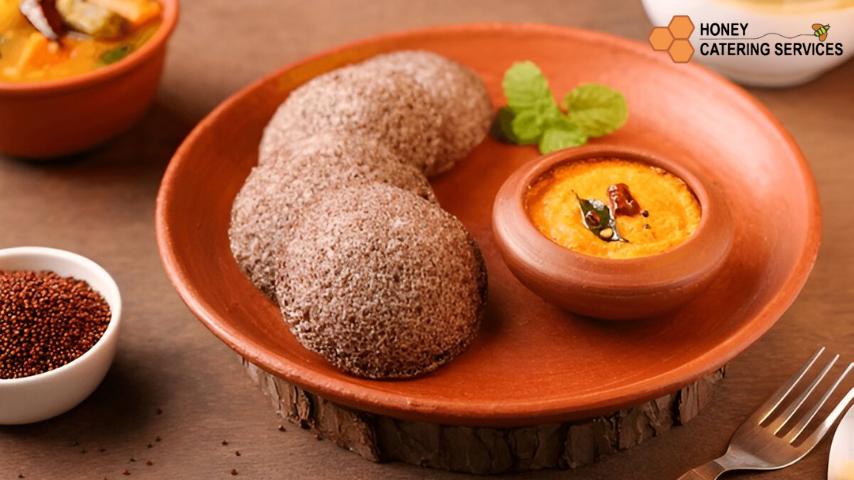
Carbs:
- 10-12g per idli (with millet or ragi)
Calories:
- 50-60 per idli
Health Benefits:
- Low-calorie alternative: Reduces carbohydrate intake without compromising on taste.
- High in fiber: Improves digestion and promotes a healthy gut.
- Iron-rich: Millet and ragi are excellent sources of iron, supporting red blood cell production and energy levels.
5. Sambar (Without Added Sugar)
Sambar is typically made with lentils and a variety of vegetables, making it a good source of protein and fiber. If prepared without sugar or jaggery (which some variations may use), sambar is naturally one among the sugar-free, low-carb south indian foods. It’s best enjoyed with low-carb dishes like ragi dosa or steamed vegetables.
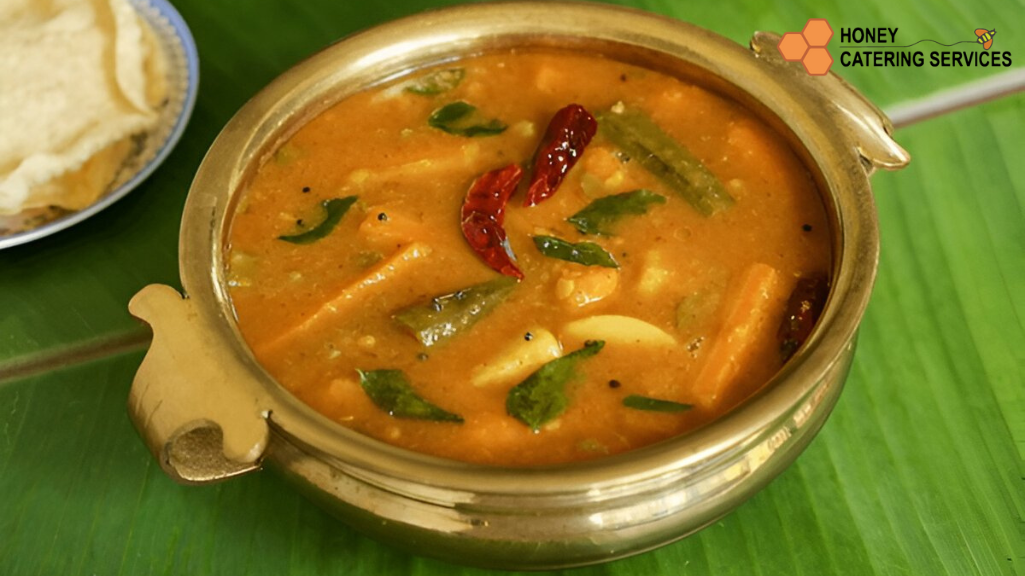
Carbs:
- 20-25g per serving (1 cup)
Calories:
- 100-120 per cup
Health Benefits:
- Protein-rich: Lentils provide plant-based protein essential for muscle repair and maintenance.
- Rich in antioxidants: Tamarind and vegetables help fight inflammation and boost immunity.
- High in fiber: Supports digestion and prevents sudden spikes in blood sugar.
6.Rasam (Without Sugar)
Rasam is a tangy, spicy soup made from tamarind, tomatoes, and spices like cumin and black pepper. It’s naturally sugar-free and low in carbs, as it’s mainly made with tomatoes, tamarind, and spices.

Carbs:
- 5-8g per serving (1 cup)
Calories:
- 40-60 per cup
Health Benefits:
- Boosts digestion: Spices like cumin, pepper, and tamarind aid in improving digestion and relieving bloating.
- Rich in vitamins: Tomatoes and tamarind provide Vitamin C for immunity and skin health.
- Low in calories: Perfect as a light soup or starter in weight-loss diets.
7.Vegetable Curry (Without Potatoes)
A vegetable curry made with a variety of non-starchy vegetables like cauliflower, beans, spinach, zucchini, and tomatoes is naturally low in carbs and sugar. Avoid adding starchy vegetables like potatoes or carrots to keep it as sugar-free,low-carb south indian foods.
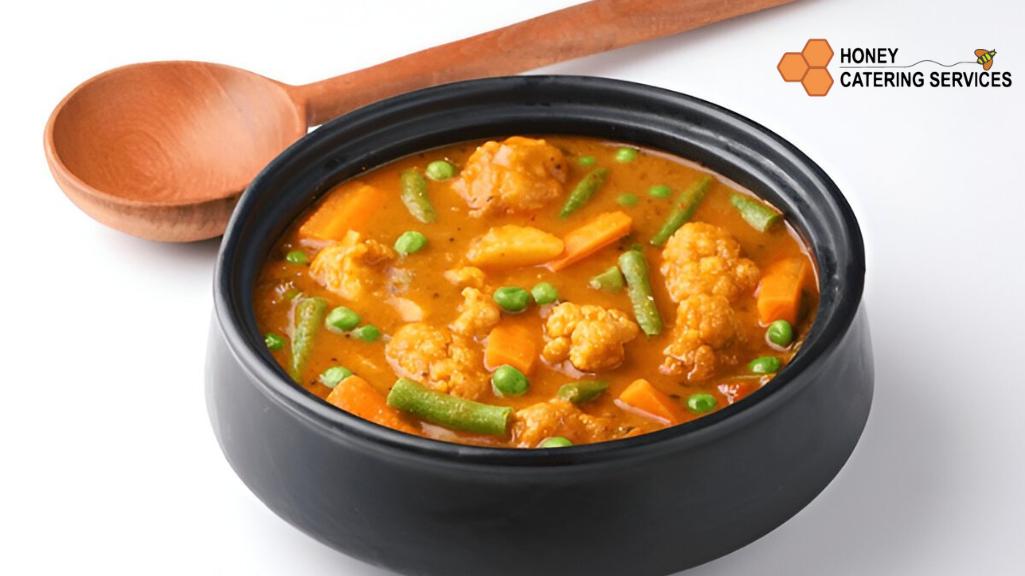
Carbs:
- 10-15g per serving (1 cup)
Calories:
- 40-60 per cup
Health Benefits:
- Loaded with vitamins and minerals: Non-starchy vegetables provide essential nutrients like potassium and Vitamin A.
- Promotes heart health: Coconut milk (if used) contains healthy fats that improve cholesterol levels.
- Low in carbs: Avoiding starchy vegetables keeps the carb count low while retaining the dish’s flavor.
8.Cabbage Poriyal
A vegetable curry made with a variety of non-starchy vegetables like cauliflower, beans, spinach, zucchini, and tomatoes is naturally low in carbs and sugar. Avoid adding starchy vegetables like potatoes or carrots to keep the carb content low. Use coconut milk or tomatoes for a flavorful, sugar-free curry.
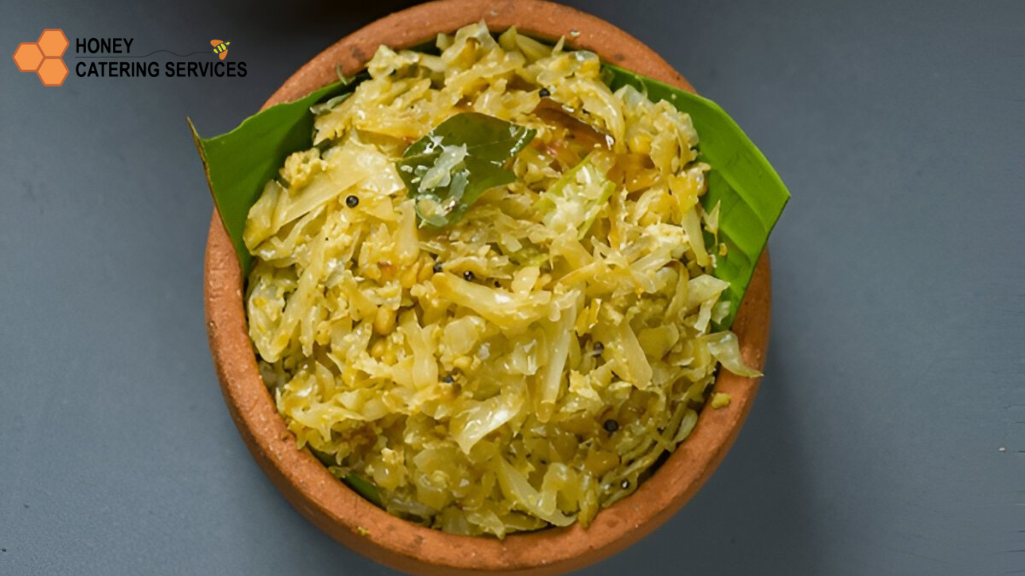
Carbs:
- 5-7g per serving (1 cup)
Calories:
- 50-70 per cup
Health Benefits:
- Rich in antioxidants: Cabbage is high in Vitamin C and other antioxidants, boosting skin health and immunity.
- Aids in digestion: Its high fiber content supports gut health and regular bowel movements.
- Weight-friendly: Low in calories and carbs, it’s an excellent choice for a side dish.
9.Kootu (Made with Lentils and Non-Starchy Vegetables)
Kootu is a dish made by combining lentils with non-starchy vegetables like pumpkin, bottle gourd, and beans. It’s a protein-rich dish that is low in carbohydrates, especially when prepared with vegetables that are not starchy.
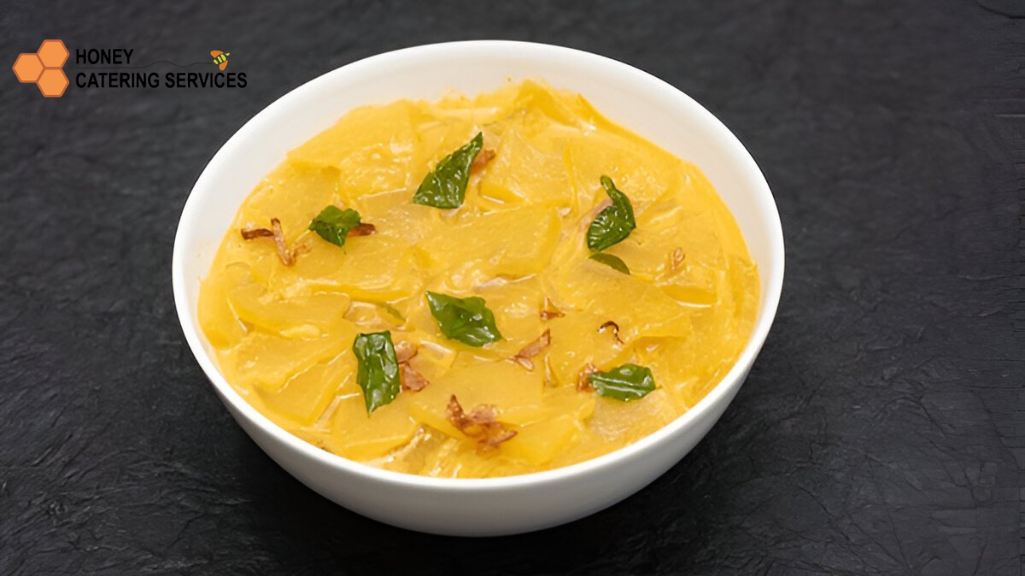
Carbs:
- 12-15g per serving (1 cup)
Calories:
- 100-120 per cup
Health Benefits:
- Packed with protein: Lentils are an excellent source of plant-based protein for muscle health.
- Rich in micronutrients: Vegetables in kootu provide a range of vitamins and minerals.
- Gut-friendly: A combination of fiber and lentils improves digestion and promotes satiety.
10.Paneer or Tofu Stir-Fry
A simple stir-fry made with paneer (Indian cottage cheese) or tofu and vegetables like bell peppers, broccoli, and spinach makes for a quick and one best among all other sugar-free, low-carb South indian foods. It’s high in protein and healthy fats, while the vegetables provide fiber and essential nutrients without added sugar.
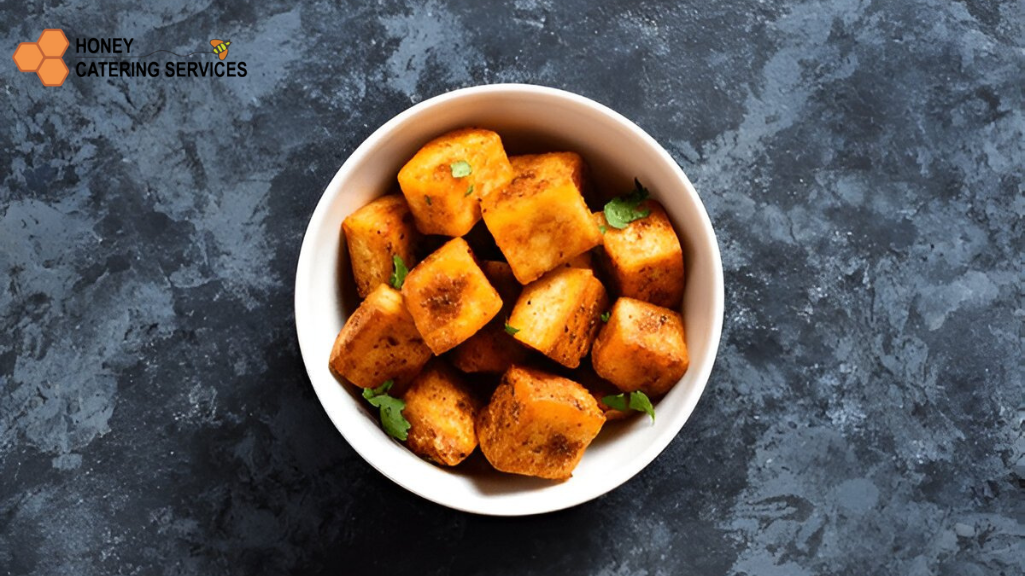
Carbs:
- 5-8g per serving
Calories:
- 150-200 per serving
Health Benefits:
- Protein boost: Paneer and tofu are rich in protein, essential for muscle repair and growth.
- Calcium-rich: Paneer supports bone health, while tofu offers a plant-based alternative with calcium and iron.
- Weight management: Low in carbs, high in healthy fats, and incredibly filling, making it perfect for those on a calorie deficit.
11.Millets:
- Millets such as ragi (finger millet)
- Kambu (Pearl millet)
- Samai (Little Millet)
- Varagu (Kodo millet)
- Kuthiraivalli (barnyard millet)
Are our traditional South Indian foods that have been taken for more than centuries. Our centuries-old recipes like Samai Upma, Ragi or Kambu Koozhu, and Idli or Dosa for millet support your body to satiate your cravings for sugar and carbs. It not only helps with weight loss but also manages blood sugar and supports weight loss.
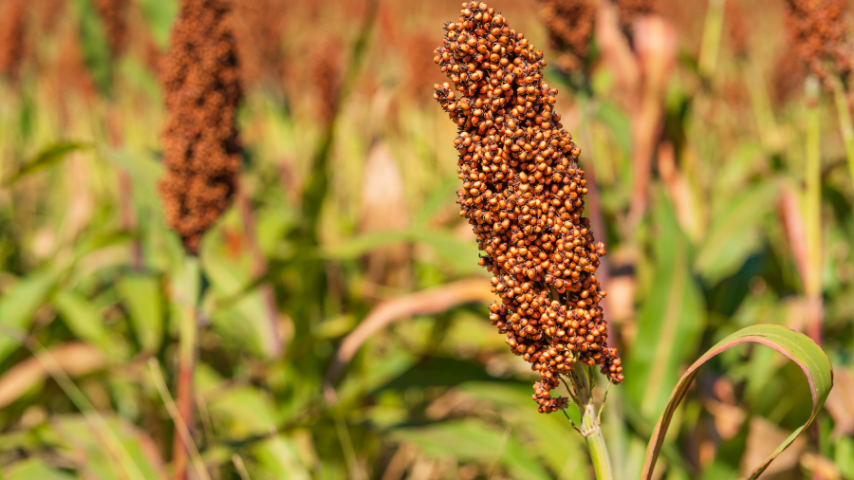
These Millets are
- Gluten-free in nature
- Low Glycemic Index
- Fiber
- Iron
- Calcium
- Antioxidants.
Want to know more about the nutritional and health benefits of millets?
Refer to the International Journal of Plant and Soil Science, emphasizing the importance of these millets that resist diabetes, obesity, and cardiovascular disorders.
Try to include all these millets in your daily food diet when you are planning for a no-sugar, low- carb south indian foods diet.
12.Quinoa
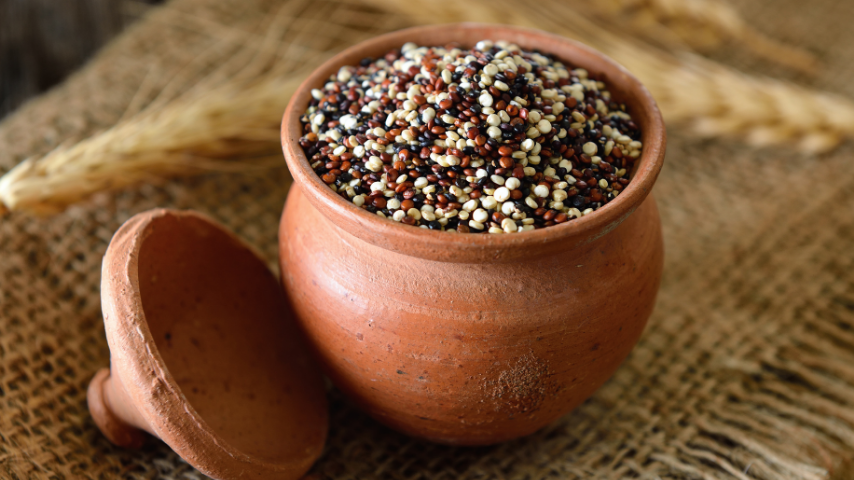
Quinoa isn’t technically a no-carb in the sense of the keto diet, but it can be added to a balanced diet. Quinoa is naturally free of sugar and gluten. It contains enough protein for your muscle strength and weight loss. It contains folate, magnesium, zinc, iron, and fiber. Here is a quinoa salad for those who plan for low glycemic index (mod – 50-53) food.
Come Let’s prepare a quinoa salad recipe.
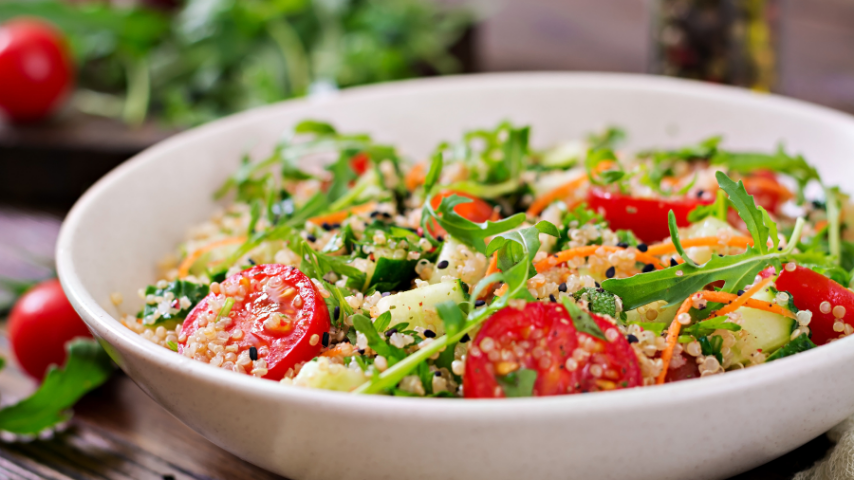
- Calories: 222 (1 Cup )
- Protein: 8 g
- Carb: 39g
- Fiber: 5 g
- Folate: 19% of Daily Value (Source: healthline)
Ingredients:
– 1 cup quinoa (rinsed)
– 2 cups water
– Some cucumber
– Cherry tomatoes (halved)
– Onion (finely chopped)
– Bell peppers (any color)
– Groundnut (if needed)
– Chopped coriander or parsley
– 1 tablespoon olive oil
– 1 tablespoon lemon juice (adjust to taste)
– Salt to taste
– Black pepper to taste
– Optional: crumbled feta cheese or boiled chickpeas or chicken
Instructions:
Add rinsed quinoa and water to a saucepan. Bring to a boil, then reduce heat and simmer for 12–15 minutes until quinoa is fluffy and water is absorbed. Let it cool. Once cooled, mix all the veggies, oil, lemon juice, and salt and pepper to taste.
Serving Tip:
For making it as No-sugar, Low-carb south indian foods, you can top it with avocado slices, roasted seeds, or grilled paneer for added taste and nutrition.
Food to Avoid when Planning on a Sugar-Free, Low-Carb South Indian Foods:

| Sugar Foods | Fatty Foods | Fruits (Sugar Rich) | Starchy Foods |
| Glucose/ Jaggery/ Honey/ Sweet/ Cream/ biscuits/ Sweets/ Cakes/ Chocolates/ Pastries/ Jam, Jellies/ Cold Drinks/ Hard drinks/ Alcohols/ | Egg yolk/ Groundnuts/ Coconut/ Mayonnaise/ Cheese/ Cream of milk/ Butter/ Fried items/ Milk products | Mango/ Banana | Potato / Sweet potato/ Tapioca/ Raw Banana |
| Source: South indian diet plan |
Conclusion:
South Indian cuisine has plenty of options that can fit into a sugar-free, low-carb south indian foods .By opting for millet-based dishes, avoiding starchy vegetables, and choosing vegetable-heavy recipes, you can enjoy flavorful and nutritious meals without worrying about sugar or carbohydrate content. Whether you’re looking to manage blood sugar levels or simply reduce your carb intake, these dishes will support your healthy lifestyle while satisfying your taste buds.
A Healthy, Delicious Way to Wellness with Honey Catering Services
Planning a wedding, engagement, or intimate function, focusing on a healthy food menu. Contact Honey Catering Services – best healthy caterers, our catering services provide a customized food menu list as per your liking. Whether it’s a traditional South Indian menu or a South Indian diet menu list, we help you arrange the required food menu. This blog guides you to focus on low-carb & no-sugar when you’re struggling to lose weight
Choose Honey Catering Services as we are the best catering services in Chennai. Healthy eating is not a compromise but a celebration of flavors. Contact us today to make your next event a healthy and unforgettable one with our sugar-free, low-carb south indian foods


